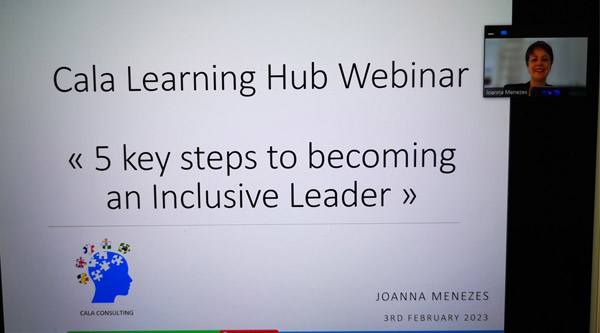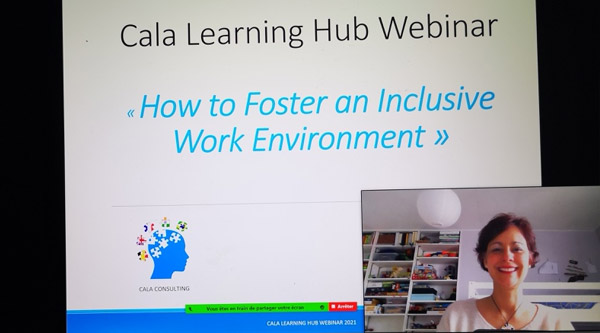Many companies are engaged in a continuous learning process. "But not all have the same level of maturity on the subject and some of their employees still see this approach as a waste of time or as a constraint," explains Ludivine Trannois, consultant and professional coach who is an expert on the subject. However, according to her, there are ways to implement a strong learning culture in companies. In this Cala Learning Hub webinar, she outlined the six steps to achieve this to an audience of a dozen members of the network.
What is a Learning Culture?
It is first and foremost a global approach that concerns both the organization and the employees. "The key word for me is collective," says Ludivine Trannois. The first essential condition: the company must be fully committed to this approach. Second condition: all employees must be involved. They must be convinced that learning is first and foremost in their own interest, but also in the interest of their teams and their entire companies.
The benefits of a strong learning culture
The figures speak for themselves. According to a study by Bersin by Deloitte, learning organisations are 92% more likely to innovate or 46% more likely to be number one in their market. But to succeed in developing this learning culture, several key points must be taken into account: allowing time for continuous learning, accepting employees' right to make mistakes, facilitating access to training, mixing teaching methods (face-to-face or remote), involving managers and evaluating performance after training.
"Managers have a key role to play in this process," insists Ludivine. A bit like a coach, they have to support the development of their teams, exchange with their employees and set up regular learning moments."
6 key steps to a successful learning culture
- Have a strategic vision of learning, which must come from the senior management;
- Use quality training tools, for example using artificial intelligence that offers personalised content to employees;
- Use quality training content that are not too long;
- Freeing up time for learning, which requires getting organized;
- Encourage social learning, i.e. learning in groups to stimulate collective intelligence;
- Develop agility in learning.
Would you also like to participate in our free webinars? Check out programme and save the date!

Blog article written by par Laure Blancard : https://www.linkedin.com/in/laure-blancard/







 Copyright © 2016 - 2024 - Cala Consulting
Copyright © 2016 - 2024 - Cala Consulting